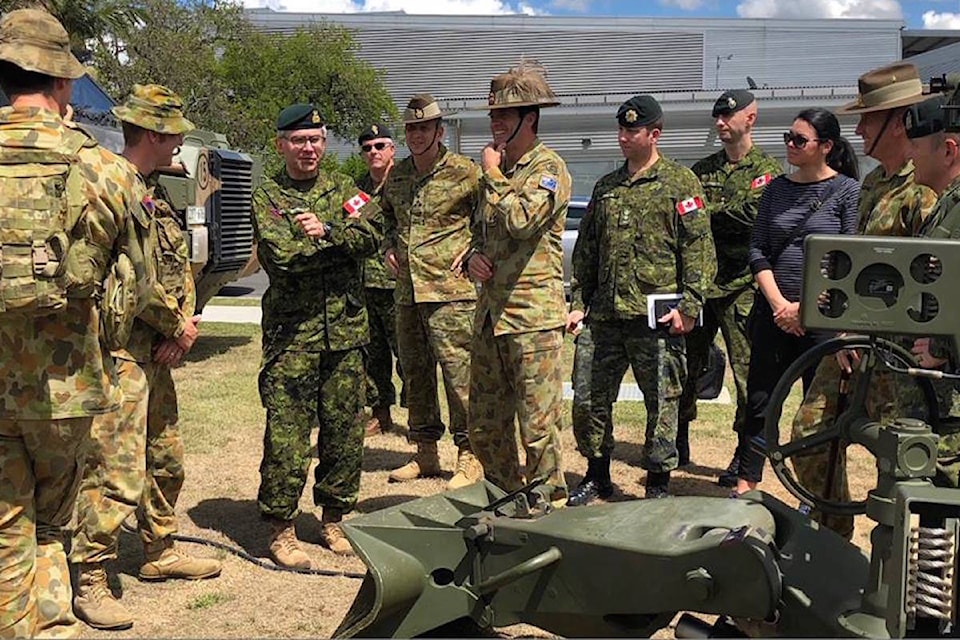A sharp drop in Americans willing to sign up for their country’s armed forces attributed in part to a steady mass-media diet of wounded soldiers, wars without end, and mistreated veterans is a recruiting problem Canadian military brass say they don’t have — with exceptions.
This month, the Pentagon began a major initiative aimed at exploring the “myths” many Americans have about their military in an effort to counteract a growing reluctance to serve. North of the border, far more Canadians — by a factor of 10 — show interest in enlisting than the armed forces actually take in any given year.
“Over the past few years, we’ve had no difficulty in recruiting to meet the numbers assigned to us by the chain of command or the government of Canada,” said Col. Andre Demers, who heads recruiting efforts from his base at CFB Borden, Ont. “We’re meeting our overall recruiting goals, globally.”
The main problem on the recruiting end in Canada, according to Demers, is finding qualified applicants for the more specialized trades, such as medical personnel, aviation technicians or IT specialists where competition with civilian society is fierce.
“Overall, the interest in the Canadian Armed Forces is there,” Demers said. “We have enough people to generate enough qualified applicants that are reflecting Canadian society and values to meet our overall requirements.”
U.S. survey results show the proportion of youth who felt the military provided an attractive lifestyle plunged from 63 per cent to 35 per cent between 2004 to 2016. As a result, the new Pentagon initiative to address the “growing civilian-military divide” aims to introduce the American public to the “real lives” of individuals serving, and correct common myths about military life.
Part of the problem, the Pentagon says, is that fewer than one per cent of Americans are currently serving, leading to a “natural disconnect” between civilians and the military and a growing ignorance about the services.
“People are having fewer direct interactions with service members,” the U.S. Department of Defense says.
Even on a relative scale, the sheer size and needs of the U.S. military dwarfs its Canadian counterpart.
For example, the Americans estimate they need an average 264,000 new recruits each year to maintain the operational readiness of a standing military estimated at roughly 1.2 million. Canada, by contrast, seeks about 5,000 recruits each year for its regular forces of about 68,000 and about 5,000 people show interest every month.
David Perry, vice-president of the Canadian Global Affairs Institute, said the Canadian Armed Forces have less of an image problem than does the U.S. military. A key issue here, he said, is the time it takes from enlistment to getting newcomers into uniform and, as the terminology goes, “trained and effective.”
“In terms of the public image, the American military has remained much more in the public eye than the Canadian one has,” Perry said. “(But) getting people who are interested into the military is a larger problem than in the United States. It’s more of a bureaucratic and human resource issue than an attraction issue.”
Gen. Jonathan Vance, chief of Canada’s defence staff, said recently the military has several initiatives underway aimed at speeding up the recruitment process. The military is also specifically trying to attract more women, visible minorities, members of the LGBTQ community and other segments of society that have been historically under-represented.
“What we’re trying to do is normalize the system and make it better overall,” Vance told The Canadian Press. “There’s no question about it: We’re growing. And it’s going to start slow and it’s going to pick up.”
Christian Leuprecht, a professor at Royal Military College in Kingston, Ont., said the Canadian Armed Forces has generally looked to a bigger segment of the population from which to attract would-be soldiers than the U.S. traditionally has done.
“We have a broader pool of recruits by trying to make the Canadian Forces as inclusive as possible,” Leuprecht said. “We are not fighting turf wars over things like gays in the military and can women serve in combat trades. Those are all hatchets that we buried.”
Still, Canada’s efforts to make its forces more representative of the population — such as signing up fewer white men from rural areas of the Prairies and Maritimes — has proven challenging. For example, military brass are aiming to increase female participation to 25 per cent of serving personnel by 2025 — a goal made elusive by ongoing stories of sexual harassment by women who have enlisted.
“When you’re continually highlighting past problems with sexual impropriety, that’s probably not the best selling point at actually getting people in the door,” Perry said.
Colin Perkel, The Canadian Press
